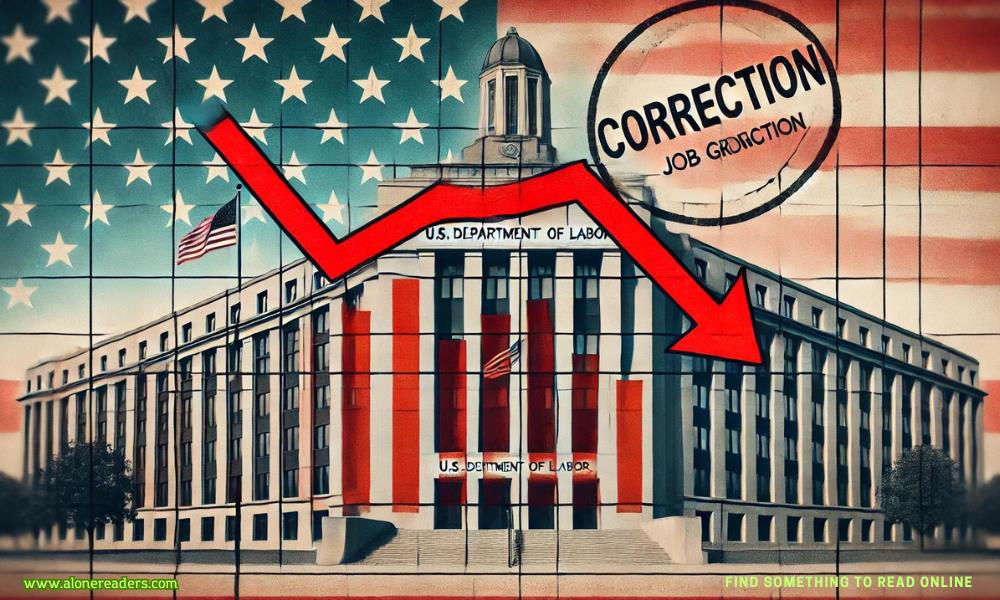
In a significant development that has caught the attention of economists and policymakers alike, the U.S. Department of Labor has issued a major correction to its previous job growth estimates. The revised figures indicate a reduction of 818,000 jobs for the period between April 2023 and March 2024. This substantial adjustment has sparked concerns about the health of the U.S. economy and has led to renewed discussions on the accuracy and reliability of labor market data.
The U.S. Department of Labor regularly publishes job growth estimates as part of its ongoing effort to track employment trends across the country. These estimates are crucial for understanding the overall health of the labor market, guiding economic policy decisions, and informing both public and private sector planning.
However, like any large-scale data collection effort, the initial estimates are subject to revision as more complete information becomes available. The revision announced in August 2024 marks one of the most significant downward adjustments in recent memory, prompting a closer examination of the factors that led to the initial overestimation.
According to the Department of Labor, the revised figures show that job growth during the 12-month period from April 2023 to March 2024 was 818,000 jobs lower than initially reported. This correction represents a reduction of approximately 20% from the original estimate, indicating that the labor market may not have been as robust as previously thought.
The revision affects various sectors of the economy, with some industries experiencing more pronounced downward adjustments than others. Notably, the healthcare, retail, and leisure and hospitality sectors were among those most significantly impacted by the revised estimates. These industries, which are typically sensitive to economic fluctuations, saw their job growth numbers adjusted downward by hundreds of thousands of positions.
Several factors contributed to the initial overestimation of job growth. One key issue was the use of preliminary data, which often relies on survey responses that may not fully capture the complexities of the labor market. Additionally, the rapid pace of economic recovery following the COVID-19 pandemic introduced unprecedented challenges in tracking employment trends accurately.
Another contributing factor was the seasonal adjustment process, which is designed to smooth out fluctuations in employment data that result from predictable seasonal patterns. However, in the context of the post-pandemic economy, traditional seasonal adjustments may have been less effective, leading to an overstatement of job growth.
Finally, the Department of Labor cited delays in data reporting and the reclassification of certain jobs as contributing factors to the discrepancy between the initial and revised figures.
The downward revision in job growth estimates has significant implications for the U.S. economy. First and foremost, it suggests that the labor market may not be as strong as previously believed, raising concerns about the sustainability of the economic recovery. This could lead to increased caution among policymakers, who may consider adjusting interest rates or implementing additional fiscal measures to support job growth.
Moreover, the revision is likely to have a ripple effect on various economic indicators, including consumer confidence, business investment, and stock market performance. Investors may respond to the news by reevaluating their expectations for future economic growth, potentially leading to increased market volatility.
For businesses, the revised job growth figures could prompt a reassessment of hiring plans and expansion strategies. Companies that were relying on strong labor market conditions to drive consumer demand may now face a more uncertain environment, potentially leading to more conservative business decisions.
The revision has drawn mixed reactions from economists and policymakers. Some have expressed concern that the correction could signal deeper issues within the U.S. economy, while others argue that revisions are a normal part of the data collection process and should not be overinterpreted.
Federal Reserve officials have indicated that they are closely monitoring the situation and will take the revised data into account when making future decisions on monetary policy. The central bank, which has been gradually raising interest rates to combat inflation, may need to reconsider its approach if the labor market shows signs of weakening further.
On Capitol Hill, lawmakers have called for a thorough review of the data collection and reporting processes used by the Department of Labor. Some have suggested that additional resources may be needed to improve the accuracy and timeliness of labor market data, particularly in light of the challenges posed by the post-pandemic economic landscape.
Looking Ahead
As the U.S. economy continues to navigate the complexities of the post-pandemic recovery, the revised job growth estimates serve as a reminder of the importance of accurate and reliable data. While the downward correction is undoubtedly concerning, it also presents an opportunity for policymakers, businesses, and economists to reassess their assumptions and strategies in light of the updated information.
In the coming months, attention will likely focus on whether the labor market can regain its momentum and whether the U.S. economy can sustain its recovery without further setbacks. The Department of Labor’s correction underscores the need for vigilance and adaptability in the face of an evolving economic landscape, where the only certainty is change.